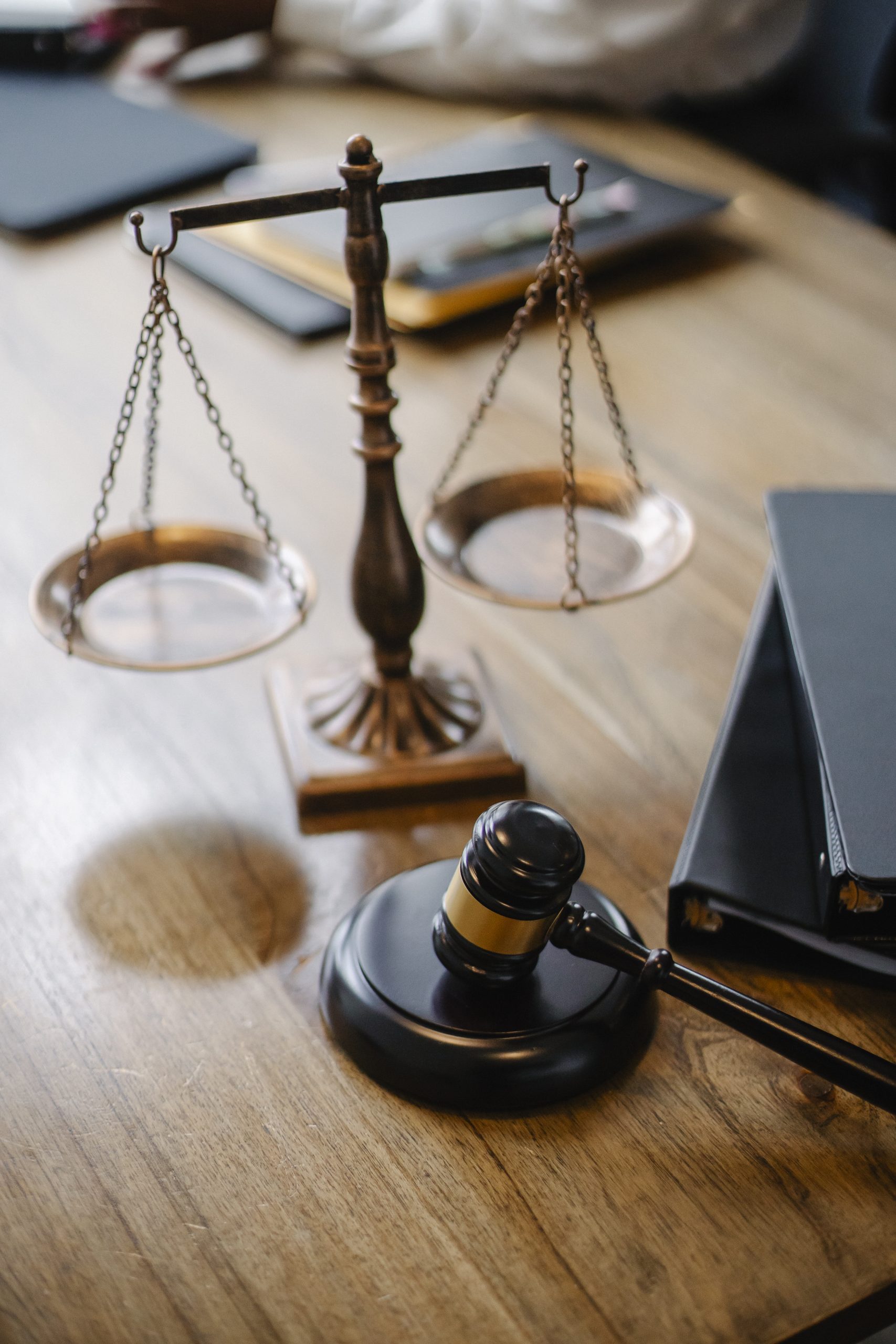Are you facing a daunting legal battle? Don’t fret, because with the right litigation strategy, victory may be closer than you think. In this article, we will explore the key elements of a winning litigation strategy that can help you navigate the complexities of the legal system. Whether you are a business owner dealing with contract disputes or an individual facing a challenging employment law issue, understanding how to approach your case strategically is essential. We will also provide answers to some frequently asked questions to address any concerns you may have. So, read on and discover how you can secure success in your legal battles. And when you’re ready to take the next step, don’t hesitate to reach out to our experienced lawyer for a consultation.

Understanding the Basics of Litigation
What is litigation?
Litigation refers to the process of resolving disputes through the court system. It involves the formal legal action taken by one party against another, with the aim of enforcing or defending a legal right. Litigation can cover a wide range of legal issues, such as contract disputes, personal injury claims, employment disputes, and more.
Types of litigation
There are various types of litigation, each with its own specialized rules and procedures. Some common types of litigation include civil litigation, criminal litigation, administrative litigation, and commercial litigation. Civil litigation typically involves disputes between individuals or entities, while criminal litigation focuses on offenses against the state. Administrative litigation deals with disputes involving government agencies, and commercial litigation deals with business-related disputes.
Key parties involved in litigation
In litigation, there are several key parties involved. The plaintiff is the party who brings the lawsuit and seeks a legal remedy, while the defendant is the party being sued. Attorneys represent both the plaintiff and the defendant and advocate for their respective clients’ interests. Additionally, judges preside over the litigation process and make decisions based on the law and evidence presented.
The litigation process
The litigation process typically begins with the filing of a complaint by the plaintiff. The defendant then responds to the complaint by filing an answer or other pleading. Discovery follows, which involves exchanging information and evidence between the parties. This is often done through interrogatories, depositions, and document requests. After discovery, the parties may engage in settlement negotiations. If a settlement is not reached, the case proceeds to trial where evidence is presented and arguments are made. Finally, a judgment is issued by the court, which may be appealed if either party disagrees with the outcome.
Benefits of having a litigation strategy
Having a well-defined litigation strategy can greatly benefit your case. It allows you to anticipate the challenges and risks involved, set clear goals, and develop a plan for achieving the best possible outcome. A litigation strategy helps guide your legal team’s efforts and ensures that your resources are used effectively. It also allows you to assess the strength of your case and evaluate potential settlement options. Overall, a well-executed litigation strategy increases your chances of success and helps you navigate the complex legal landscape with confidence.
Identifying the Issues and Setting Goals
Analyzing your legal situation
Before developing a litigation strategy, it is crucial to analyze your legal situation thoroughly. This involves conducting a detailed assessment of your rights and obligations, as well as any potential legal claims or defenses you may have. A thorough analysis will help you understand the strengths and weaknesses of your case and make informed decisions moving forward.
Identifying the main issues
Once you have analyzed your legal situation, the next step is to identify the main issues at hand. This involves determining the central legal questions that need to be resolved in order to achieve your desired outcome. By clearly identifying the main issues, you can focus your resources and efforts on addressing them effectively.
Setting specific goals
Setting specific goals is an essential part of developing a litigation strategy. These goals should be measurable, achievable, and aligned with your overall objectives. For example, your goals may include obtaining a favorable judgment, securing a settlement within a certain range, or minimizing potential financial damages. Setting specific goals helps you stay focused and gives you a clear benchmark to work towards.
Considering financial implications
Litigation can be a costly endeavor, so it is important to consider the financial implications of your case. This includes assessing the potential costs involved, such as attorney fees, court fees, expert witness fees, and other related expenses. By carefully considering the financial implications, you can make informed decisions about your litigation strategy and allocate your resources effectively.
Evaluating the potential risks
Every legal battle involves inherent risks, and it is crucial to evaluate these risks before developing your litigation strategy. This includes considering the likelihood of success, the potential consequences of losing the case, and any reputational risks associated with the litigation. By conducting a thorough risk assessment, you can make informed decisions about how to proceed and mitigate potential risks where possible.
Building a Strong Legal Team
Hiring the right attorney
One of the most important steps in developing a solid litigation strategy is hiring the right attorney. A skilled and experienced attorney can provide you with the guidance, knowledge, and expertise needed to navigate the complexities of litigation successfully. When hiring an attorney, consider their experience in the relevant area of law, their track record of success, and their ability to effectively communicate and collaborate with you.
Selecting supporting professionals
In addition to hiring an attorney, it may be necessary to engage the services of other supporting professionals, such as expert witnesses or consultants. These professionals can provide specialized knowledge and expertise that is crucial to the success of your case. When selecting supporting professionals, make sure they have relevant experience and qualifications, and that they are aligned with your litigation strategy.
Creating a collaborative environment
Building a strong legal team requires creating a collaborative environment where all team members can work together effectively. This involves fostering open communication, promoting teamwork, and encouraging the sharing of ideas and perspectives. A collaborative environment helps ensure that all team members are aligned with the litigation strategy and can contribute their expertise to the best possible outcome.
Defining roles and responsibilities
Clearly defining roles and responsibilities within the legal team is essential for efficient coordination and effective execution of the litigation strategy. Each team member should have a clear understanding of their role, the tasks they are responsible for, and the deadlines they need to meet. By defining roles and responsibilities, you can minimize confusion and ensure that everyone is working towards the same goal.
Establishing effective communication channels
Effective communication is key to the success of any legal team. Establishing clear and efficient communication channels ensures that everyone is kept informed, can share important information, and can address any issues or concerns promptly. Regular team meetings, status updates, and a centralized system for document sharing can greatly enhance communication and collaboration within the legal team.
Gathering and Organizing Evidence
Identifying relevant evidence
In order to build a strong case, it is crucial to identify and gather relevant evidence. This includes any documents, records, or other tangible evidence that supports your legal claims or defenses. It is important to carefully consider the types of evidence that will be most persuasive to the court and focus your efforts on obtaining that evidence.
Collecting documentary evidence
Documentary evidence plays a critical role in litigation. This may include contracts, emails, financial statements, invoices, and other relevant documents. Collecting and organizing these documents is vital to ensure they can be easily accessed and referenced throughout the litigation process. It is important to gather both the original documents and any copies that may exist.
Interviewing witnesses
Witness testimony can be crucial in supporting your legal claims or defending against allegations. Identifying and interviewing potential witnesses allows you to gather firsthand accounts of the events in question, which can help strengthen your case. When interviewing witnesses, it is important to ask open-ended questions and carefully evaluate their credibility and relevance to the case.
Engaging expert witnesses
In some cases, expert witnesses may be necessary to provide specialized knowledge or opinions on complex issues. Engaging the right expert witness can greatly enhance the strength of your case. When selecting an expert witness, consider their qualifications, experience, and ability to effectively communicate their opinions to the court.
Organizing evidence for easy retrieval
Organizing your evidence in a systematic and logical manner is essential for easy retrieval and efficient presentation during litigation. This can be done through the use of electronic document management systems, chronological summaries, or other organization methods. Properly organized evidence ensures that you can quickly access the information you need and present it effectively in court.
Crafting a Persuasive Legal Theory
Conducting legal research
To develop a persuasive legal theory, it is important to conduct thorough legal research. This involves analyzing relevant statutes, regulations, case law, and legal principles that are applicable to your case. By conducting comprehensive legal research, you can identify arguments, precedents, and legal theories that support your position.
Formulating a strong legal theory
A strong legal theory forms the foundation of your case. It is a clear and concise explanation of the legal arguments and principles on which your case is based. A strong legal theory should be supported by relevant legal authority and align with the goals and objectives you have set for your case.
Developing supporting arguments
Supporting arguments are essential for building a persuasive case. These arguments expand on your legal theory and provide the court with compelling reasons to rule in your favor. When developing supporting arguments, consider the strengths and weaknesses of your case and anticipate counterarguments that may be raised by the opposing party.
Anticipating counterarguments
Anticipating counterarguments allows you to prepare responses and address potential weaknesses in your case. By considering the opposing party’s likely arguments, you can develop strategies and gather evidence to counter their claims effectively. Anticipating counterarguments demonstrates thorough preparation and strengthens your overall case.
Creating a compelling narrative
Crafting a compelling narrative helps bring your case to life and makes it more relatable to the court. A well-told story can engage the judge or jury and create an emotional connection with the facts and issues at hand. By weaving together the relevant facts, legal principles, and supporting arguments into a coherent narrative, you can enhance the persuasive power of your case.
Preparing for Trial
Developing a trial strategy
Developing a trial strategy is crucial for effectively presenting your case in court. This involves determining the key legal points to emphasize, the order of witnesses and evidence presentation, and the overall structure of your trial. A well-developed trial strategy ensures that you are prepared, organized, and can effectively communicate your case to the court.
Drafting pleadings and motions
Pleadings and motions are legal documents that are filed with the court and serve to articulate your legal arguments. Drafting these documents requires careful attention to detail, as they set the stage for your case and frame the legal issues for the court. Properly drafted pleadings and motions enhance the clarity and persuasiveness of your case.
Preparing witnesses for testimony
Preparing witnesses for testimony is essential for ensuring that they are able to present their testimony clearly and confidently in court. This involves reviewing key facts, answering potential questions, and working on effective communication techniques. By adequately preparing your witnesses, you can enhance their credibility and the overall persuasiveness of their testimony.
Preparing exhibits and visual aids
Exhibits and visual aids can greatly enhance the clarity and impact of your case. These may include charts, graphs, photographs, videos, or other visual representations of key facts or arguments. When preparing exhibits and visual aids, make sure they are relevant, accurate, and easy for the court to understand.
Creating a comprehensive trial notebook
A trial notebook is a comprehensive and organized collection of all the documents and materials you will need during trial. This includes pleadings, motions, witness statements, exhibits, and any other relevant information. Creating a trial notebook ensures that you have easy access to all the necessary materials and can navigate the trial process smoothly.

Negotiating Favorable Settlements
Understanding the benefits of settlement
Settlement offers several benefits compared to continuing with litigation. It can save time, money, and resources, and provide a quicker resolution to the dispute. Settlement also allows the parties to retain control over the outcome and tailor the terms of the agreement to better meet their needs. Understanding the potential benefits of settlement can help you evaluate whether it is the right option for your case.
Assessing the strength of your case
Before entering into settlement negotiations, it is important to assess the strength of your case objectively. This involves evaluating the quality of the evidence, the strength of your legal arguments, and the potential risks and rewards of proceeding to trial. By assessing the strength of your case, you can have a realistic understanding of your bargaining position during negotiations.
Conducting effective settlement negotiations
Conducting effective settlement negotiations requires careful preparation and strategic thinking. This includes identifying your goals and interests, understanding the other party’s position, and developing alternative solutions. During negotiations, it is important to maintain open lines of communication, explore creative options, and be willing to compromise when it serves your overall interests.
Leveraging strengths and weaknesses
When negotiating a settlement, it is important to leverage the strengths of your case and exploit the weaknesses of the opposing party’s case. This can be done by highlighting the strengths of your legal arguments, presenting persuasive evidence, and addressing any weaknesses in the opposing party’s position. By strategically leveraging strengths and weaknesses, you can increase your chances of securing a favorable settlement.
Documenting settlement agreements
Once a settlement agreement has been reached, it is crucial to document the terms of the agreement accurately and comprehensively. This includes outlining the rights and obligations of each party, the agreed-upon remedies, and any other important provisions. Documenting the settlement agreement helps ensure that all parties are clear on their responsibilities and can enforce the terms if necessary.
Presenting a Compelling Case
Mastering courtroom etiquette
Mastering courtroom etiquette is crucial for presenting a compelling case in court. This involves following established rules and practices, showing respect to the judge and opposing counsel, and conducting oneself professionally. By demonstrating proper courtroom etiquette, you can enhance your credibility and effectively communicate your case to the court.
Delivering persuasive opening statements
The opening statement is a critical opportunity to outline your case and set the stage for the entire trial. A persuasive opening statement should capture the court’s attention, present a clear and compelling narrative, and highlight the key facts and legal arguments that support your case. By delivering a persuasive opening statement, you can create a favorable impression and frame the issues in your favor.
Skillful direct and cross-examinations
Direct and cross-examinations allow you to present evidence and challenge the credibility of witnesses. Skillfully conducting direct examinations helps you elicit key facts and testimony that support your case. Cross-examinations, on the other hand, allow you to challenge the opposing party’s witnesses and weaken their credibility. By conducting skillful direct and cross-examinations, you can strengthen your case and undermine the opposing party’s arguments.
Effectively using visual aids
Visual aids can greatly enhance the clarity and impact of your case during trial. This may include charts, graphs, photographs, videos, or other visual representations of key facts or arguments. When using visual aids, make sure they are relevant, easy to understand, and support the points you are making. Effectively using visual aids can help the court visualize complex information and make your case more persuasive.
Presenting strong closing arguments
Closing arguments provide your final opportunity to persuade the court and leave a lasting impression. A strong closing argument should reiterate your main points, summarize the evidence, and present a compelling argument in favor of your position. By presenting a strong closing argument, you can help the court understand the significance of the evidence presented and make a favorable ruling.

Handling Appeals and Post-Trial Motions
Understanding the appeals process
After the trial verdict has been reached, it is important to understand the appeals process if either party wishes to challenge the decision. Appeals involve reviewing the trial court’s decision and arguing that it was incorrect or unfair. Understanding the appeals process allows you to assess the merits of an appeal and determine the appropriate course of action.
Identifying appealable issues
To have a successful appeal, it is important to identify appealable issues – those errors or issues that may have affected the outcome of the trial. This may include errors in the application of the law, procedural errors, or improper admission or exclusion of evidence. By identifying appealable issues, you can focus your appellate arguments and increase your chances of having the trial court’s decision overturned.
Drafting persuasive appellate briefs
Appellate briefs are legal documents that present the arguments and legal authority supporting your appeal. Drafting persuasive appellate briefs requires careful analysis of the trial record, as well as thorough research and legal reasoning. The brief should clearly and persuasively articulate the errors or issues that support your appeal and offer compelling legal authority to support your position.
Presenting oral arguments
Oral arguments provide an opportunity to present your case and respond to questions from the appellate court. To present persuasive oral arguments, it is important to thoroughly prepare and anticipate potential questions or concerns that the court may have. By presenting clear and concise arguments and effectively addressing the court’s questions, you can enhance the persuasive power of your appeal.
Filing post-trial motions
Post-trial motions are motions that are filed after the trial verdict has been reached but before the entry of judgment. These motions can ask the court to reconsider its decision or seek other relief. Filing post-trial motions allows you to bring attention to any errors or issues that may have affected the outcome of the trial and potentially obtain a more favorable ruling.
FAQs
What is the typical duration of a legal battle?
The duration of a legal battle can vary widely depending on various factors, such as the complexity of the case, the court’s schedule, and the parties involved. Some cases may be resolved within a few months, while others can stretch on for years. It is best to consult with an attorney to get an estimate of the expected duration based on the specifics of your case.
How much does litigation cost?
The cost of litigation can vary greatly depending on the nature and complexity of the case, as well as the fees charged by the attorney and other professionals involved. Litigation costs may include attorney fees, court fees, expert witness fees, and other related expenses. It is important to discuss the potential costs with your attorney and develop a budget that aligns with your resources and goals.
What are the chances of winning a lawsuit?
The chances of winning a lawsuit depend on various factors, including the strength of the evidence, the persuasiveness of the legal arguments, and the decisions of the judge or jury. It is important to consult with an attorney to assess the merits of your case and evaluate the likelihood of success based on the specific circumstances.
Can I change lawyers during the litigation process?
Yes, it is possible to change lawyers during the litigation process. However, it is important to consider the potential impact on your case and consult with an attorney before making any decisions. Changing lawyers may involve additional costs and can potentially disrupt the progress of your case. It is crucial to assess the potential benefits and risks before deciding to switch attorneys.
What happens if I lose the case?
If you lose a case, there are several possible outcomes depending on the specifics of the case and the judgment rendered by the court. You may be required to pay damages to the opposing party, comply with a court order, or face other legal consequences. It is important to consult with an attorney to understand the implications of losing the case and explore potential options for appeal or other legal remedies.



